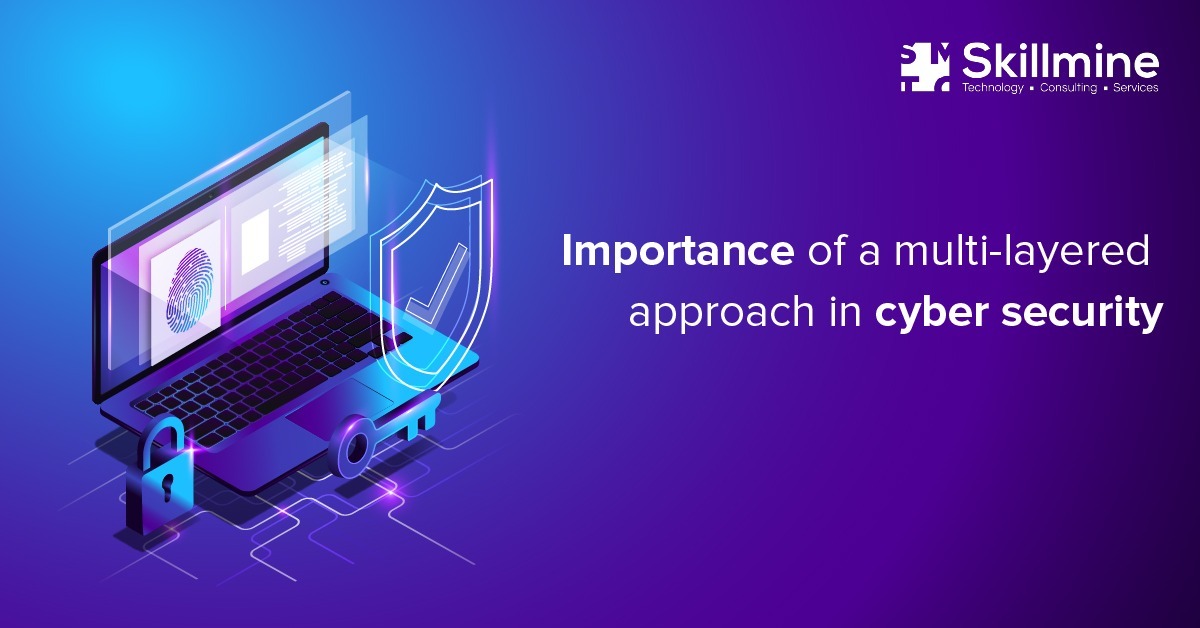In April 2021, trading platform Upstox openly acknowledged a breach of know-your-customer (KYC) data. KYC data is collected by financial service companies to verify their customers’ identities and prevent fraud or money laundering. However, hackers can use KYC data to commit identity theft. The damage was reversed by asking customers to reset their passwords. The instances of cyberattacks are on the rise and a multi-layered security approach can help you better safeguard your company’s data. Thus, it should be a part of your overall ICT security plan.
What is multi-layered security?
Multi-layered security is a method of defending your business operations and securing your ICT infrastructure and services by combining numerous separate components that each serve a different purpose and safeguard different items.
The goal of a multi-layered security approach is to make sure that each defensive component installed isn’t the only defensive measure `covering that specific access point, to assist offset any flaws or gaps in your security or defences. Each layer focuses on defending a specific region that could be targeted by hackers or malware. When compared to using a single security solution, these layers work together to strengthen your organization’s overall network security and considerably minimize the likelihood of a successful cyberattack or data breach. For a variety of reasons, a multi-layered security approach can be helpful.
Components of multi-layered security
Monitoring
Ensuring that you are aware of what is going on in your business environment and that you can connect events occurring in different parts of your environment to get a complete picture.
Network
Ensuring that your network is appropriately protected, reducing superfluous services, implementing a secure baseline configuration, and ensuring that bandwidth is protected.
Internet
Ensuring that your organization’s internet access is not only monitored and safeguarded but that users attempting to access your services via the internet are also appropriately managed.
Users
Keeping privileged access to a bare minimum and ensuring that user identities are adequately verified before they are granted access. Ensure that employees receive Cyber Awareness Training.
Devices
Ensuring that device configurations match a secure baseline and that an effective antivirus and host firewall are in place.
Firewall and Intrusion Prevention
Ensuring that access to your services from employees, partners, and the public is properly protected and taking steps to know if your firewall and other security measures have been compromised.
Patch Management
Ensuring that updates are applied to user devices, servers, apps, appliances, and network equipment as soon as possible.
Data protection
Regularly backing up your data and ensuring that it can be restored, as well as knowing what data you have and having proper procedures in place to preserve it.
Having comprehensive, and, more crucially, multiple procedures in place in each of those five categories, can help your business avoid cybersecurity services incidents. It’s important that you do not limit your focus to one area alone, but consider what you’ll do in the other areas, as well as how these tools will communicate and collaborate.
The truth is that there is no guarantee that the tools you use will function 100% of the time. Vulnerabilities will always exist, and you can be sure that hackers will use them to their advantage. Our security stacks can never be perfect.
A comprehensive security stack with many solutions that complement each other is the greatest proactive response to such a continually evolving security threat to minimize the risks of cyberattacks as much as possible.
Anupam Joshi, Senior Manager, Cyber security services, Skillmine Technology Consulting encapsulates the sentiment perfectly. He says, “It’s necessary that businesses/users have a focused approach to the platform they use. The primary layer of cyber security would be to create awareness around the topic and educate businesses. Protection, detection, and analysis of the cyber security incident constitute the other layers. However, there is always the possibility of a loophole left unaddressed, that can result in future attacks. But a proactive approach that makes space for continuous research and innovation must be devised.”
Looking for expert technology consulting services? Contact us today.





